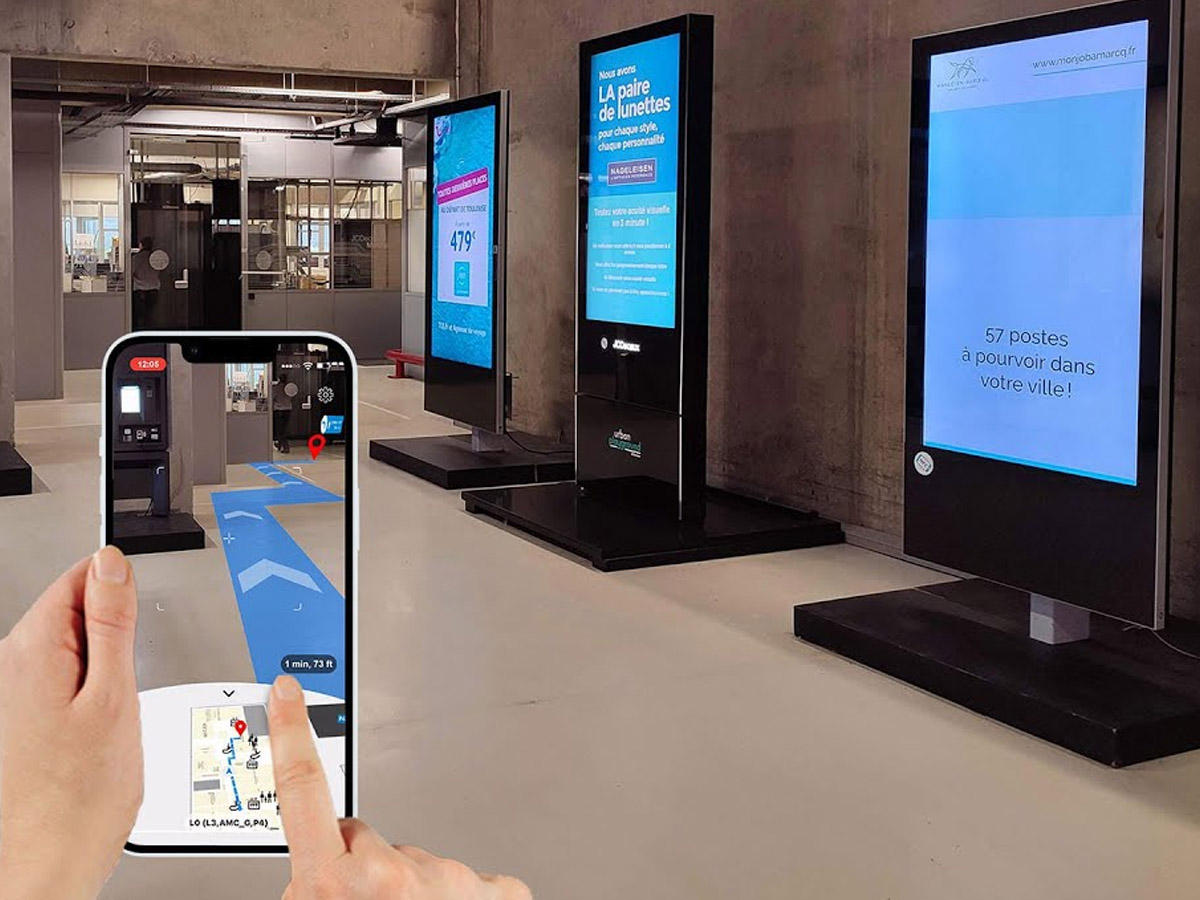Digital signage technology is constantly evolving, driven by advancements in hardware, software, and consumer expectations. As we look to the future, several key trends are emerging, shaping the trajectory of the industry and revolutionizing the way businesses communicate with their audiences.
- Interactivity:

One of the most significant trends in digital signage is the growing demand for interactive experiences. Consumers crave engagement and personalization, and interactive displays deliver just that. Touchscreens, gesture recognition, and mobile integration empower viewers to interact with content actively, whether it’s browsing product catalogs, accessing additional information, or even making purchases directly from the screen. As businesses strive to create immersive brand experiences, interactivity will continue to be a driving force in digital signage innovation.
- Data-driven Content:

Data analytics are increasingly being used to inform digital signage content strategies. By leveraging audience demographics, behavior patterns, and real-time feedback, businesses can deliver targeted, relevant content that resonates with viewers. Machine learning algorithms can analyze data to optimize content delivery based on factors like time of day, location, and audience demographics, ensuring maximum impact and engagement. In the future, we can expect to see even more sophisticated data-driven content strategies driving the evolution of digital signage.
- Dynamic Content and Personalization:
Static, one-size-fits-all content is quickly becoming a thing of the past. Today’s consumers expect personalized experiences tailored to their preferences and interests, and digital signage is rising to the challenge. Dynamic content capabilities allow businesses to customize messaging based on factors like audience demographics, purchase history, and even real-time environmental conditions. Whether it’s displaying targeted promotions, personalized recommendations, or interactive experiences, digital signage is becoming increasingly adept at delivering relevant content that speaks directly to the viewer.
- Augmented Reality (AR) and Virtual Reality (VR):
As AR and VR technologies continue to mature, they’re finding their way into the world of digital signage. AR overlays can add virtual elements to the physical environment, enhancing the viewer’s perception of reality and creating immersive brand experiences. VR, on the other hand, transports viewers to entirely virtual worlds, offering unique storytelling opportunities and unparalleled levels of engagement. From interactive product demos to virtual try-on experiences, AR and VR are opening up new possibilities for digital signage in retail, entertainment, and beyond.
- Sustainability and Eco-friendly Solutions:
With increasing awareness of environmental issues, businesses are placing greater emphasis on sustainability in their digital signage initiatives. LED displays, energy-efficient hardware, and recyclable materials are becoming standard features, reducing energy consumption and minimizing environmental impact. In addition, cloud-based content management systems enable remote updates and scheduling, reducing the need for physical maintenance and further lowering the carbon footprint of digital signage networks.
In conclusion, the future of digital signage is bright, driven by a convergence of technological innovation, changing consumer behaviors, and a growing emphasis on sustainability. As businesses continue to adapt to the evolving landscape, embracing trends like interactivity, data-driven content, and personalized experiences will be key to staying ahead of the curve and delivering impactful, engaging brand experiences to audiences around the world.
Check out how Digital Signage Solutions are changing the dynamics of modern world businesses here.

